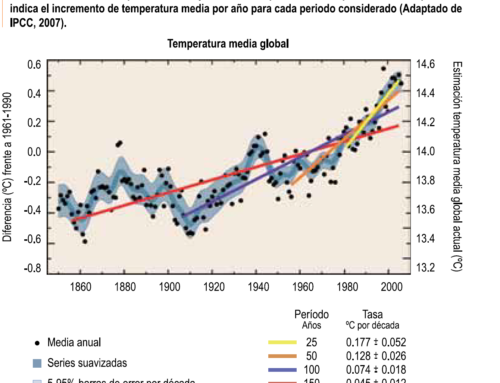Knowing what might happen to the climate in the future requires the design of GHG emission scenarios. Scenarios estimate possible future human GHG emissions under different economic, social and technological scenarios.
With these scenarios, GHG concentrations in the atmosphere are known, which are incorporated into climate models. These models are like our crystal ball for projecting the climate of the future.
About the author
Alicia Polidura Pérez
Marine biologist
The scenarios only incorporate the effect of human emissions, as changes in natural factors such as solar activity or volcanism cannot be predicted.
These models simulate the climate on the basis of the GHG concentrations obtained from the different scenarios and those that make it possible to project the different climatic variables: temperature, rainfall, winds, etc.
The scenarios presented by the IPCC in its 2007 document are four (one with three possibilities). They range from B1, the lowest emissions scenario, to A1FI, the highest emissions scenario.

Global temperature changes
 Temperature projections for the period 2000-2100 are in all scenarios for a rapid increase in global average temperature, with warming of 2 to 7°C (end of the 21st century) over pre-industrial conditions.
Temperature projections for the period 2000-2100 are in all scenarios for a rapid increase in global average temperature, with warming of 2 to 7°C (end of the 21st century) over pre-industrial conditions.
Changes in surface temperature
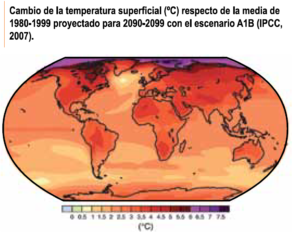
Future surface warming will not be homogeneous.
- The greatest warming is expected in the Arctic, up to 7°C by the end of the century.
- Warming over the continents will be greater than over the oceans.
- In general, the Northern Hemisphere will warm the most.
Changes in precipitation.
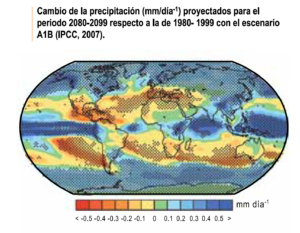
Increased precipitation in polar and sub-polar regions and at the equator will cause these areas to become wetter.
Decreased precipitation in temperate zones and the subtropics will cause these areas to become drier and more arid.
Increase in extreme weather events
The frequency and intensity of extreme weather events will change in the future. Heat waves, torrential rains, extreme winds, etc. will increase.
Aumentarán las olas de calor, especialmente en zonas con mayor calentamiento.
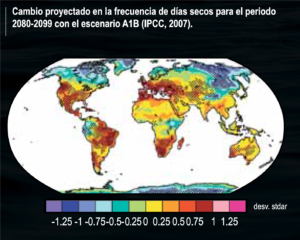
Aumentarán las lluvias torrenciales, especialmente en las zonas subtropicales.
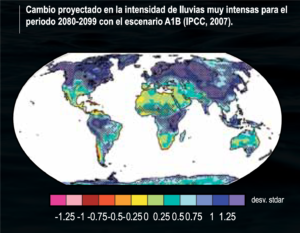
Aumentarán el número de días secos, especialmente en la zona del ecuador.



